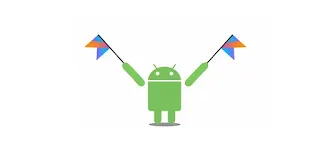78. Basic Components and Layouts - Image handling and loading
🖼️ Image Handling and Loading in Jetpack Compose: A Comprehensive Guide
Welcome, Kotlin and Android developers! In this detailed tutorial, we'll explore the nuanced world of image handling and loading within Jetpack Compose, covering essential techniques, best practices, and advanced strategies for efficient image management in modern Android applications.
📡 Image Loading Fundamentals
Jetpack Compose provides multiple approaches for image loading and rendering. Understanding these methods is crucial for creating performant and visually appealing applications.
🔹 Core Image Loading Methods
// Resource-based image loading
Image(
painter = painterResource(id = R.drawable.my_image),
contentDescription = "Local Image"
)
// URL-based image loading with Coil
Image(
painter = rememberImagePainter(data = "https://example.com/image.jpg"),
contentDescription = "Network Image"
)
🛠️ Image Loading Libraries
While Jetpack Compose offers basic image loading, third-party libraries enhance capabilities:
- Coil: Lightweight, Kotlin-first image loading library
- Glide: Robust image loading with advanced caching
- Accompanist: Official Jetpack Compose image loading solution
📦 Coil Integration Example
// Add to build.gradle
implementation "io.coil-kt:coil-compose:2.2.2"
// Usage
AsyncImage(
model = ImageRequest.Builder(LocalContext.current)
.data("https://example.com/image.jpg")
.crossfade(true)
.build(),
contentDescription = "Network Image"
)
🎨 Image Transformation Techniques
Jetpack Compose offers powerful image transformation capabilities:
// Circular Image
Image(
painter = painterResource(id = R.drawable.profile),
contentDescription = "Profile",
modifier = Modifier
.size(100.dp)
.clip(CircleShape)
)
// Border and Shadow
Image(
painter = painterResource(id = R.drawable.landscape),
contentDescription = "Landscape",
modifier = Modifier
.border(2.dp, Color.Gray, RoundedCornerShape(8.dp))
.shadow(4.dp, RoundedCornerShape(8.dp))
)
🚀 Performance Optimization
Key strategies for efficient image handling:
- Use image loading libraries with built-in caching
- Implement lazy loading for large image collections
- Compress and optimize images before loading
- Use appropriate image formats (WebP preferred)
💡 Practical Challenges
🏁 Conclusion
Mastering image handling in Jetpack Compose requires understanding various techniques, libraries, and optimization strategies. By leveraging modern tools and best practices, you can create performant, visually stunning Android applications.
📱 Stay Updated with Android Tips!
Join our Telegram channel for exclusive content, useful tips, and the latest Android updates!
👉 Join Our Telegram ChannelGet daily updates and be part of our growing Android community!


Comments
Post a Comment